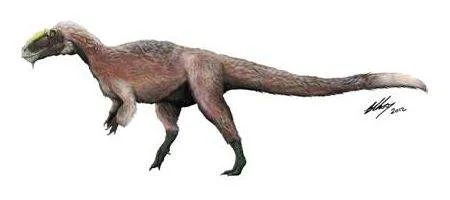A newly-discovered dinosaur, a close relative of the Tyrannosaurus rex, has been discovered to have had feathers.

While it’s been known for some time that many smaller dinosaurs were feathered, this is the first time that a much larger species has been found to share the same trait.
Three specimens of the new species have been discovered in a quarry in northeastern China. It’s been dubbed Yutyrannus huali – meaning ‘beautiful feathered tyrant’ in a combination of Latin and Mandarin.
“The feathers of Yutyrannus were simple filaments,” says professor Xu Xing of Beijing’s Institute of Vertebrate Paleontology and Paleoanthropology.
“They were more like the fuzzy down of a modern baby chick than the stiff plumes of an adult bird.”
The researchers estimate that an adult Yutyrannus would have been about nine metres long and weighed about 1400 kg – considerably smaller than T rex, but a good 40 times the weight of the largest previously known feathered dinosaur, Beipiaosaurus.
The discovery lends weight to the theory that feathers developed for insulation rather than flight – something Y. Huali couldn’t possibly have managed.
“The idea that primitive feathers could have been for insulation rather than flight has been around for a long time,” says Dr Corwin Sullivan, a Canadian palaeontologist involved in the study.
“However, large-bodied animals typically can retain heat quite easily, and actually have more of a potential problem with overheating. That makes Yutyrannus, which is large and downright shaggy, a bit of a surprise.”
The explanation may be that Yutyrannus lived during the middle part of the Early Cretaceous, when temperatures are thought to have been comparatively cool.
“Yutyrannus dramatically increases the size range of dinosaurs for which we have definite evidence of feathers,” says Xu.
“It’s possible that feathers were much more widespread, at least among the meat-eating dinosaurs, than most scientists would have guessed even a few years ago.”






